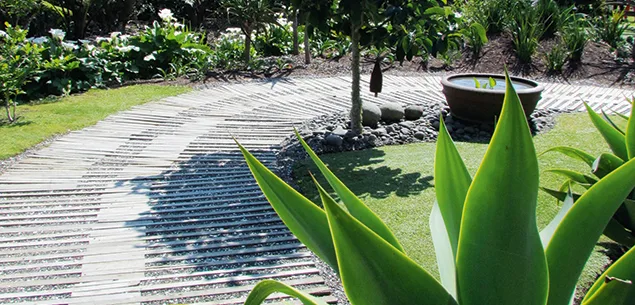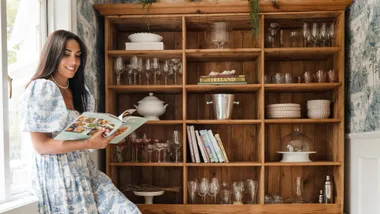People often tell me I should volunteer to open our garden for the local garden safari. “When hell freezes over,” I say.
It’s not the work that puts me off – well, it is, but that’s not the main thing. It’s more the logistics of having hundreds of people through the garden for two whole days, while I try to subdue the barking dog, stop people parking on the septic tank, keep the OCD tabby out of the fishpond, dissuade the neighbour’s dog from distributing the contents of the compost bin all over the lawn, dispose of the Burmese cat’s collection of mouse skeletons, and keep a smile on my face when someone points out that agapanthus and acmenas are naughty plants and I shouldn’t be growing them.
But happily, there are people who thrive on such challenges, and right now they’re probably immersed in preparing their gardens for safari season, which starts at the end of October. That’s not very long to make sure everything is going to be perfect on the day.

The garden safari assessors have their eyes out for key features, like this diamond hedge.
Neither is it very long for the organisers of all the events around the country, although for some of them, it’s an ongoing commitment that carries on right through the year.
For example, as soon as one Taranaki garden festival finishes, a very experienced team of three assessors starts sorting the gardens to be open to the public the following year.
It wasn’t always like that, though. The Taranaki festival started out as a very casual affair in 1988, mainly to celebrate the collection of rhododendrons at the iconic Pukeiti gardens. Since then, it has evolved into the Powerco Taranaki Garden Spectacular and is a major drawcard on New Zealand’s gardening calendar.
It’s now organised by the Taranaki Arts Festival Trust (they run Womad and the Taranaki Arts Festival) and held over 10 days from October 31.
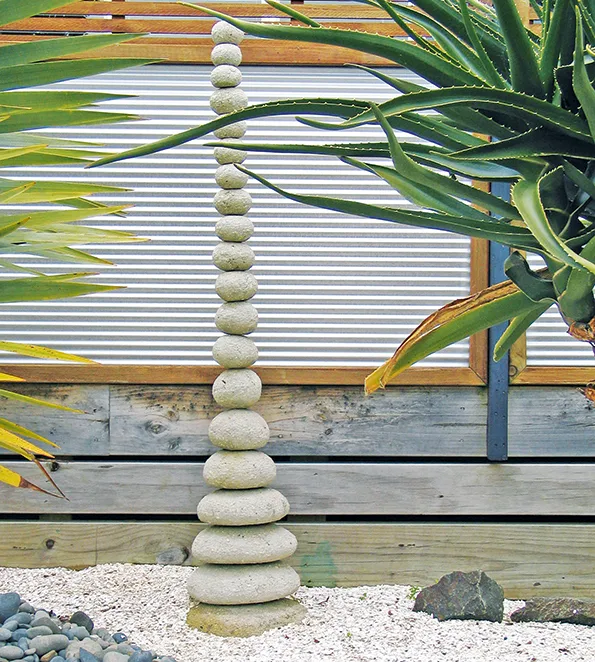
A stone sculptural work takes pride of place in the garden.
Jenny Oakley, a gardens assessor for the festival who’s also on the liaision committee, has worked on all 26 festivals. She holds a bachelor degree in Amenity Horticulture, worked at Hollards Gardens for many years and is well known for her landscaping work.
Joining her on the team of assessors are Graham Smith (who was head gardener at the Pukeiti gardens for 40 years) and another local horticultural stalwart, Tony Barnes.
“Our assessment starts every year as soon as the festival closes,” she says. “We’re always looking for new gardens. People sometimes want to take a rest or have sold their properties, so we’re continually networking and have our ears open to all suggestions for gardens.”
The assessors start their work by reassessing gardens that have been part of the festival before. “We have to ensure the standard is maintained. Then we look at the new gardens with a very detailed selection form. We have to know there are enough features of interest for the visitors, and that the design standard is high, along with the quality and health of plants. Maintenance is naturally a big factor and we like to see a significant feature of interest.”
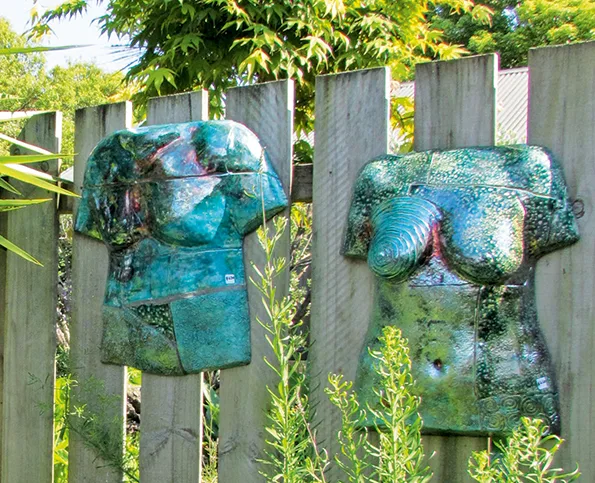
To be part of a garden tour, smaller gardens need to have an interesting design and a fantastic array of plant materials.
Jenny says the smaller gardens must be very sharp in design and/or use a fantastic array of plant materials. “These have to be quite special, and it’s often these gardens that really attract the public. Many people want to see how ideas are used in domestic gardens.”
And the garden owners have to be available to the public during the festival. “They have to be able to cope with 10 days of visitors and be available for their questions. This is one of the major drawcards,” says Jenny. “There is a huge range of folk who open their gardens and an increasing number of very energetic young people who have to take time off work.”
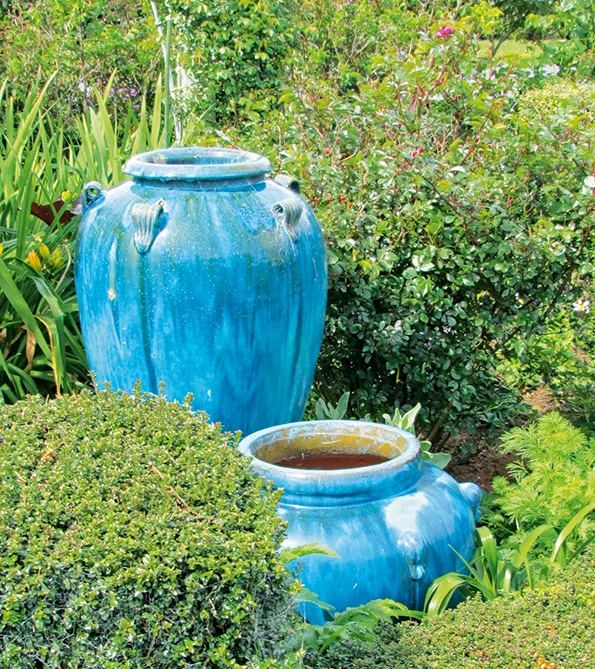
Have a decorative containers on hand to fill gaps should something die the day before the event.
Tips for newbies:
Try to get everything finished a few days before the safari so you can step back and relax
Before the event, ask a friend to come and look at the garden and point out any gaps or eyesores
Have a few plants or decorative containers on hand to fill gaps should something die or suddenly look completely dreadful the day before the event
Get a couple of friends to help out during the open days – talking to people non-stop can be tiring
If you have a dog that barks, find a sitter. It’ll be easier on everyone
Don’t be tempted to have a final trim at the last minute. You’ll find yourself with a big clean-up job right before the event
Mow and weed-eat a few days – not the day – before, so your lawns look lush, and use a slightly higher setting than usual
If you have photographs of the evolution of your garden, supply a folder of these for visitors to look at. Add pics and descriptions of any rare or unusual plants in your garden.
One woman’s experience:
“I don’t think I’d do it again,” says Fiona Jackson, who opened her gates for a garden safari a couple of years ago. “I worked flat out on it from about March till October and by the time the safari happened, I was so exhausted I could hardly talk. Then I had three days of sitting on the deck trying to chat to visitors.”
On the upside, she says, the safari motivated her to complete a number of projects that had been languishing, and she got a huge amount of pleasure seeing her garden at its absolute best.
“I was really, really proud of it, and myself,” she says. “But if you think it’ll just be a bit of fun, think again. It’s a huge commitment.” Fiona advises roping in a good friend to help you before and during the event.
Take a look at this article on planting impatiens here.
